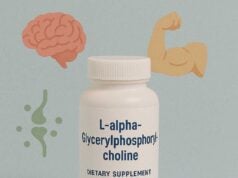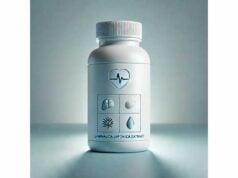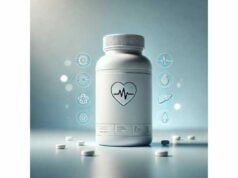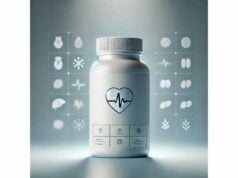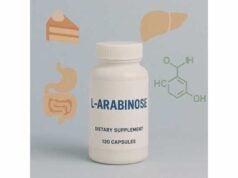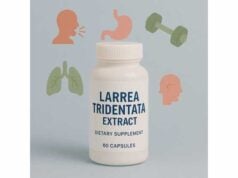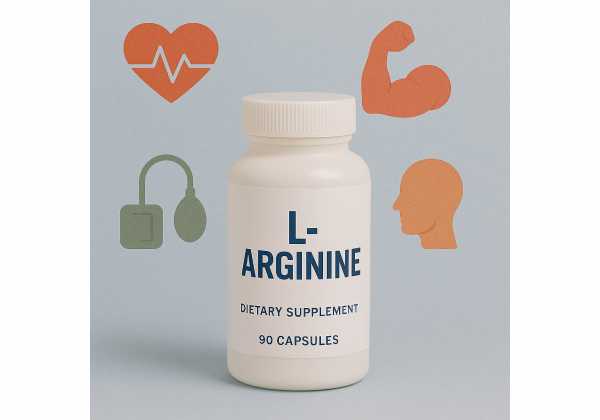
L-arginine is a conditionally essential amino acid that your body uses to make nitric oxide—a messenger that relaxes blood vessels and influences circulation, blood pressure, and sexual function. It is also involved in creatine synthesis, wound repair, immune activity, and the urea cycle. As a supplement, L-arginine shows promise for specific goals such as blood-pressure support and certain cases of erectile dysfunction, but it is not a universal performance booster. Results depend on dose, health status, and whether you combine it with other nutrients like L-citrulline. Most healthy adults tolerate modest doses, though higher intakes can cause gastrointestinal upset or lower blood pressure. Safety is different right after a heart attack and for some medical conditions, where L-arginine is not advised without physician oversight. This guide clarifies where L-arginine helps, where it likely does not, and how to use it thoughtfully: what to buy, how much to take, what to pair it with, and when to avoid it.
Key Insights
- Supports vascular function and may modestly reduce systolic and diastolic blood pressure at ≥4 g/day.
- Can improve mild to moderate erectile dysfunction in some adults at 3–6 g/day; effects vary by cause.
- Typical supplemental dosage: 3–6 g/day in divided doses; avoid routinely exceeding 9 g/day due to GI effects.
- Not ideal for post–heart attack recovery and should be avoided then unless your cardiologist says otherwise.
Table of Contents
- What is L-arginine?
- Benefits you can expect
- How to use it well
- Dosage and timing examples
- Mistakes and when to avoid
- Evidence summary and FAQ
What is L-arginine?
L-arginine is one of the twenty amino acids found in dietary proteins. Your body can make it from L-citrulline, but demand rises during stress, illness, or injury—hence the term “conditionally essential.” Its best-known role is as the direct precursor to nitric oxide (NO), the molecule endothelial cells use to signal smooth muscle in blood vessel walls to relax. When NO rises, vessels dilate and blood pressure tends to fall slightly. The same mechanism underpins penile blood flow during sexual arousal and affects exercise hemodynamics.
Arginine also sits at a crossroads of metabolism:
- Creatine pathway: Arginine contributes to creatine synthesis, which fuels short bursts of muscular work.
- Urea cycle: It helps clear ammonia by converting it to urea.
- Repair and immunity: Arginine availability can influence collagen deposition, wound healing, and certain immune responses.
Diet provides roughly 4–5 g/day from meat, poultry, seafood, dairy, and nuts and seeds (pumpkin, sesame, peanuts). Supplements deliver higher per-dose amounts than foods, which is often necessary to influence NO meaningfully, because a substantial portion of oral arginine is broken down in the gut and liver before it reaches the bloodstream.
Two related compounds are common on labels:
- L-citrulline: Converts to L-arginine in the kidneys and often raises blood arginine more efficiently gram-for-gram.
- Arginine alpha-ketoglutarate (AAKG): A salt form marketed for “pumps.” Its benefits track with the arginine dose, not the salt.
In practice, L-arginine is best viewed as a circulatory support tool with targeted utility, rather than a general-purpose performance enhancer. Its effectiveness hinges on dose, baseline vascular health, and whether other limiting factors (e.g., endothelial dysfunction, low NO production) are present.
Benefits you can expect
Blood pressure support. Across randomized trials, oral L-arginine can produce modest reductions in systolic and diastolic blood pressure, with a clearer effect when daily intake reaches ≥4 g and intervention lasts several weeks. The mechanism is straightforward: more substrate for nitric oxide synthase yields more NO, better endothelial function, and lower peripheral resistance. The magnitude is typically in the single-digit millimeters of mercury; think of L-arginine as an adjunct to—not a replacement for—diet, exercise, and prescribed therapies.
Erectile function in select cases. For adults with vasculogenic erectile dysfunction, especially mild to moderate severity, 3–6 g/day may improve scores on validated questionnaires and, in some studies, penile blood-flow metrics. Benefits are more likely when poor endothelial NO is part of the problem (for example, in diabetes or atherosclerosis). When erectile issues are rooted in nerve injury, hormonal imbalance, or performance anxiety, arginine is less likely to help on its own.
Exercise and “pump.” Despite hype, arginine alone rarely enhances strength, power, or endurance in trained athletes. Acute doses often fail to raise blood NOx reliably because intestinal and hepatic arginase degrade a large fraction of the dose. Where arginine does contribute is indirectly: in people with endothelial dysfunction, it may improve flow-mediated responses and perceived exertion during submaximal work. For pure performance goals, L-citrulline or citrulline malate generally outperforms arginine at equivalent tolerability.
Other contexts. Arginine is used clinically for specific indications (e.g., some urea cycle disorders, certain diagnostic tests) and as part of specialized medical nutrition for wound healing. Those uses are clinician-directed and outside the scope of over-the-counter supplementation.
What not to expect. Arginine is not a shortcut to large, durable changes in muscle size, VO₂ max, or sprint performance. It will not correct multifactorial hypertension or erectile dysfunction when underlying drivers (sleep apnea, insulin resistance, medications, psychogenic factors) remain unaddressed.
Bottom line: Expect small but meaningful circulatory benefits at the right dose and duration, with the best evidence in blood pressure and mild vasculogenic erectile dysfunction; set modest expectations for athletic performance unless you pair it strategically (often with L-citrulline) and fix foundation habits.
How to use it well
Choose the right form and dose. Plain L-arginine HCl or free-base L-arginine is usually sufficient. Specialty salts (like AAKG) are not consistently superior. For vascular goals, aim for 3–6 g/day, divided into two or three doses. Dividing the total reduces GI upset and smooths plasma levels. If you are sensitive, start at 1–2 g/day for a week and titrate.
Timing by goal:
- Blood pressure / endothelial support: Consistency matters more than timing. Split morning and evening (e.g., 1.5–3 g twice daily).
- Sexual function: Daily, divided dosing works best (e.g., 1.5–2 g with breakfast, 1.5–2 g with dinner). Some people add 2–3 g 30–60 minutes before anticipated activity, but sustained daily use underpins the effect.
- Training days: If you still wish to try it pre-workout, take 3–6 g about 45–60 minutes before exercise. Pairing with L-citrulline (2–6 g) may provide a steadier rise in arginine.
Pairings that make sense:
- L-citrulline: Often more effective at raising blood arginine. Combining 1:1–1:2 arginine:citrulline leverages both intestinal and renal handling.
- PDE-5 inhibitors (prescribed): In select cases and with physician approval, adding arginine may enhance response in vasculogenic erectile dysfunction; medical oversight is important to avoid excessive drops in blood pressure.
- Dietary pattern: Support endothelial health with Mediterranean-style eating, aerobic activity, and sleep hygiene. Supplements amplify fundamentals; they don’t replace them.
Quality and label reading:
- Look for products that disclose elemental L-arginine per serving (not just compound weight).
- Third-party testing seals (e.g., USP, NSF) indicate better quality control.
- Avoid blends that hide doses in “proprietary matrices.”
Tolerability tips:
- Take with food to reduce nausea or loose stools, especially if your daily total exceeds 4–5 g.
- Avoid jumping to high doses. Many unpleasant effects come from trying 9–10 g+ right away.
- If you notice headaches, dizziness, or an unusual drop in blood pressure, reduce the dose or stop and consult a clinician.
Who benefits most:
- Adults with borderline hypertension or stiff arteries, where endothelial NO is constrained.
- Adults with mild to moderate vasculogenic erectile dysfunction, after addressing sleep apnea, smoking, and medications that impair erections.
Dosage and timing examples
Below are practical, conservative frameworks you can adapt with your healthcare provider. All doses are elemental L-arginine.
For blood pressure support
- Standard plan (4 weeks): 2 g with breakfast and 2 g with dinner (4 g/day).
- If well tolerated and BP remains high: Increase to 3 g twice daily (6 g/day). Stay at this dose for another 4–8 weeks, then reassess.
- Maintenance: Many people settle at 3–4 g/day. Combine with proven lifestyle measures and monitor BP at home.
For mild vasculogenic erectile dysfunction
- Base plan (8–12 weeks): 1.5–2 g in the morning and 1.5–2 g in the evening (3–4 g/day).
- Optional “event” dose: Add 2–3 g 30–60 minutes before sexual activity, not exceeding 6 g total that day unless directed by a clinician.
- If response is partial: Consider adding L-citrulline 2–3 g/day or discussing physician-guided combination with a PDE-5 inhibitor.
For pre-workout experimentation (mixed evidence)
- Trial (2–3 weeks): 3 g of L-arginine 45–60 minutes before training. If no benefit, discontinue or switch to L-citrulline 3–6 g instead. Do not exceed 9 g/day total arginine.
Special cases (clinician-directed only)
- Pregnancy-related hypertension or growth restriction: This domain requires obstetric supervision.
- Serious illness, kidney or liver disease, or recent heart attack: Do not self-prescribe arginine. Risks can outweigh benefits.
When to take breaks
- If you reach your goal (e.g., better home BP readings) and maintain lifestyle changes, you can taper to the lowest effective dose or cycle 8–12 weeks on / 4 weeks off, tracking how you feel and what your numbers show.
Measuring success
- Track home BP (same cuff, same time of day) and symptom diaries for energy, headaches, and sexual function.
- If using for erectile dysfunction, use a brief validated questionnaire monthly (e.g., IIEF-5) to quantify change.
Mistakes and when to avoid
Common mistakes
- Starting too high. Jumping to 9–10 g/day is a recipe for diarrhea and nausea. Titrate from 1–2 g/day.
- Expecting gym magic. Arginine alone usually does not boost strength or endurance in trained athletes. If performance is your goal, trial L-citrulline instead.
- Ignoring the cause of erectile problems. Undiagnosed sleep apnea, depression, medication effects (e.g., SSRIs, beta-blockers), or low testosterone can overshadow any benefit from arginine.
- Combining with multiple vasodilators without a plan. Stacking arginine with nitrates, high-dose antihypertensives, or alcohol can compound dizziness or hypotension.
- Assuming “more is better.” Above 6 g/day, benefits plateau for many, while side effects rise.
Who should skip or seek medical advice first
- Recent heart attack or unstable heart disease. Post–myocardial infarction patients have shown worse outcomes with arginine added to standard care; do not use unless your cardiologist approves.
- Severe kidney or liver disease. Altered nitrogen handling raises safety concerns.
- Low blood pressure or autonomic dysfunction. Extra vasodilation can worsen symptoms.
- Frequent cold sores (HSV-1). High-arginine diets can, in some people, trigger outbreaks; if you notice a pattern, reduce dose or avoid.
- Pregnancy or breastfeeding. Use only under obstetric guidance.
- Children. Therapeutic use is specialist territory.
Side effects to watch for
- Gastrointestinal upset: nausea, cramping, loose stools—common above 5–6 g/day.
- Headache or lightheadedness: may reflect lowered blood pressure; reduce dose.
- Sleep disturbance in a minority when taken late at night; shift earlier.
- Interactions: Potential additive effects with PDE-5 inhibitors, antihypertensives, and nitrates.
Quality pitfalls
- Proprietary blends that hide the true gram amount of arginine.
- Supplements contaminated with stimulants. Choose third-party tested products.
When to stop and call a professional
- New chest pain, shortness of breath, palpitations.
- Persistent blood pressure below your clinician’s threshold.
- No improvement after 8–12 weeks at a well-tolerated dose—reassess the diagnosis and broader plan.
Evidence summary and FAQ
How strong is the blood-pressure evidence?
Pooled randomized trials in adults show statistically significant decreases in both systolic and diastolic blood pressure with oral L-arginine. Dose–response modeling suggests benefits consolidate around ≥4 g/day, and interventions lasting several weeks are more informative than short trials. Effects are modest—think single-digit mmHg reductions—but meaningful when stacked with lifestyle changes.
What about erectile dysfunction?
In vasculogenic erectile dysfunction, particularly mild to moderate severity, daily 3–6 g has improved validated scores and, in some studies, penile hemodynamics. Larger trials using 6 g/day over three months report better erectile function versus placebo, with stronger objective changes in milder cases. Combination approaches (arginine plus L-citrulline or physician-prescribed PDE-5 inhibitors) may yield additive benefits for select patients.
Is arginine good for athletes?
For trained athletes, the performance gains are inconsistent. Many trials show no improvement in strength, time trials, or NO biomarkers with arginine alone, likely because gut and liver arginase degrade a large share of the dose. L-citrulline often raises arginine more efficiently and has a more favorable performance signal in some protocols, though results still vary by sport and training status.
Are there serious risks?
Most healthy adults tolerate up to 9 g/day for short periods, with GI symptoms the main complaint. A critical exception: in the months after a heart attack, adding arginine to standard therapy did not improve outcomes and was linked to higher mortality in one rigorously controlled trial. That is why post-MI use is not recommended outside a cardiology plan. People with chronic illnesses, those on multiple vasodilators, and pregnant individuals should seek individualized advice.
Arginine vs. citrulline: which first?
If your primary goal is raising blood arginine and NO, L-citrulline (2–6 g/day) often does so more reliably with fewer GI issues. If you prefer arginine—or you are targeting erectile function specifically—use 3–6 g/day, divided, and consider adding citrulline if results are modest.
How long until I notice anything?
For blood pressure, reassess after 2–4 weeks. For erectile function, plan on 6–12 weeks of consistent dosing before judging. If there is no appreciable change by then, revisit the broader plan with your clinician.
References
- Effect of l-Arginine Supplementation on Blood Pressure in Adults: A Systematic Review and Dose-Response Meta-analysis of Randomized Clinical Trials — 2022 (Systematic Review)
- Long-term high-dose l-arginine supplementation in patients with vasculogenic erectile dysfunction: a multicentre, double-blind, randomized, placebo-controlled clinical trial — 2022 (RCT)
- Dietary Supplements for Exercise and Athletic Performance — 2023 (Guidance)
- L-arginine therapy in acute myocardial infarction: the Vascular Interaction With Age in Myocardial Infarction (VINTAGE MI) randomized clinical trial — 2006 (RCT)
Disclaimer
This guide provides general information about L-arginine for adults and is not a substitute for personalized medical advice. Do not start or stop any supplement or medication without consulting a qualified healthcare professional who knows your medical history. Individuals with cardiovascular disease, kidney or liver disorders, pregnancy, low blood pressure, or those taking nitrates, antihypertensives, or PDE-5 inhibitors require personalized guidance. If you experience chest pain, severe dizziness, shortness of breath, or any alarming symptom, seek urgent medical care.
If you found this article useful, consider sharing it with friends or colleagues on Facebook, X (formerly Twitter), or any platform you prefer, and follow us for future updates. Your support helps us continue creating careful, evidence-based guides.

